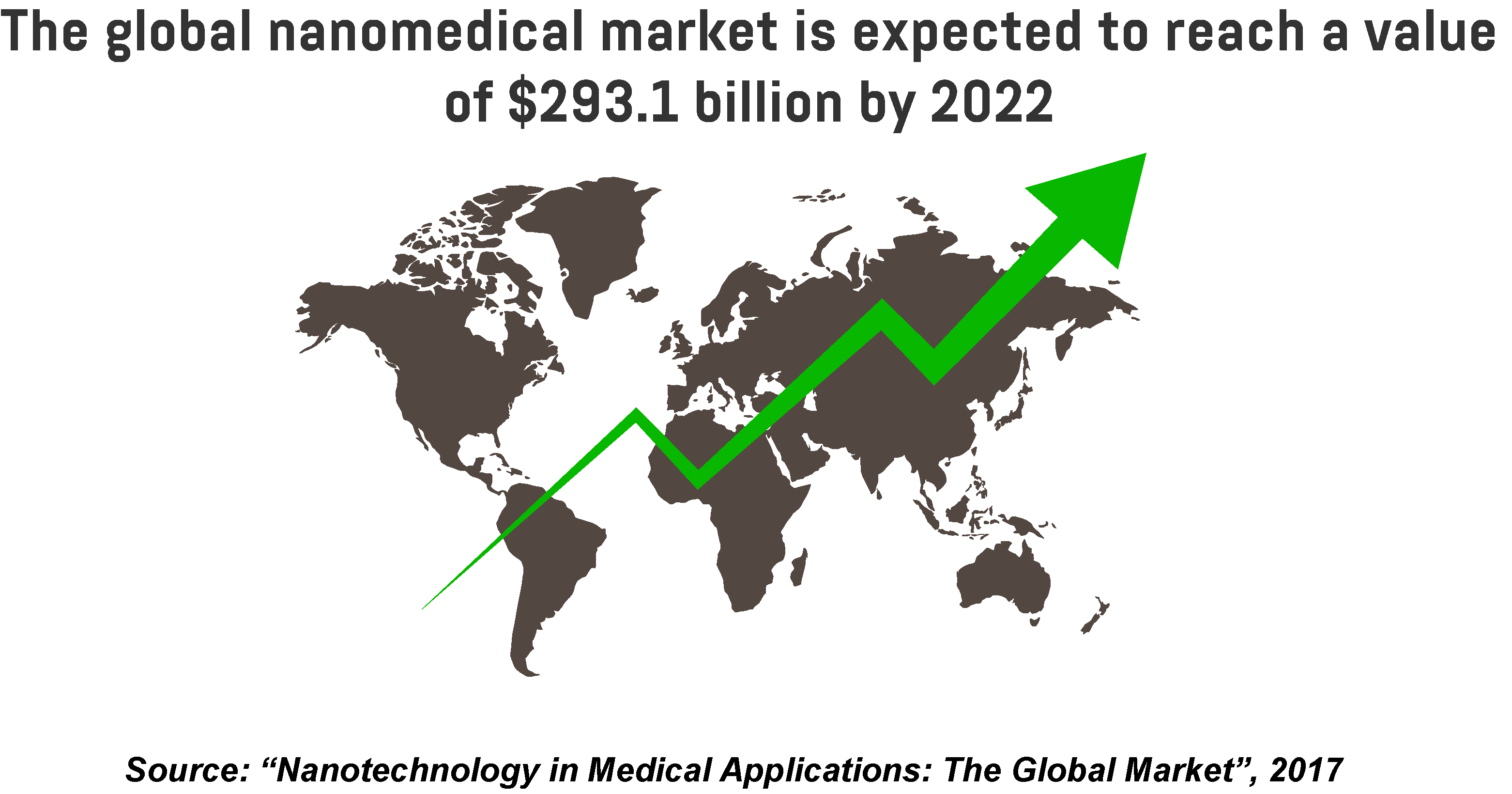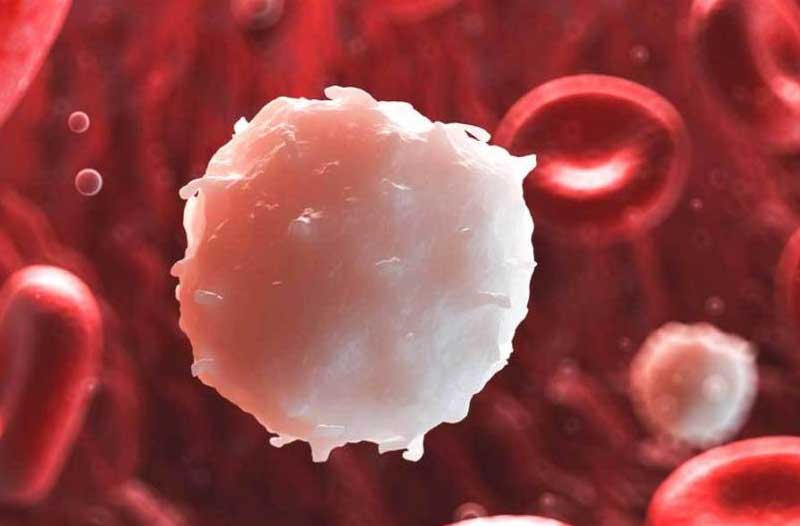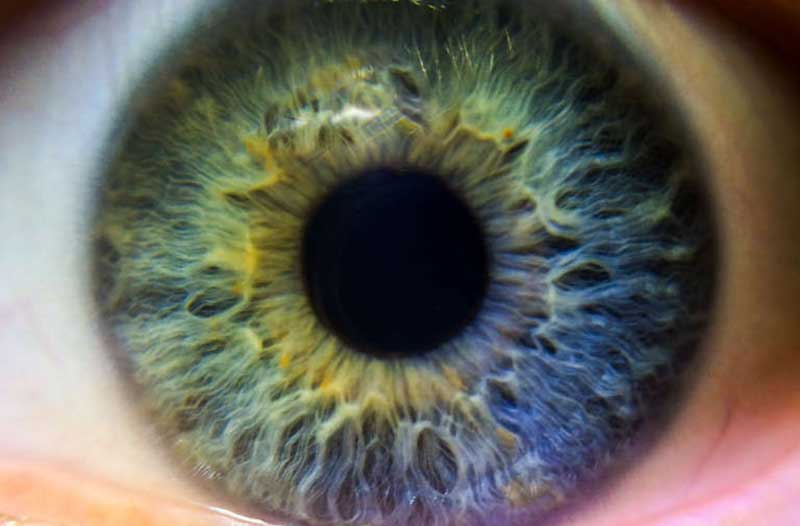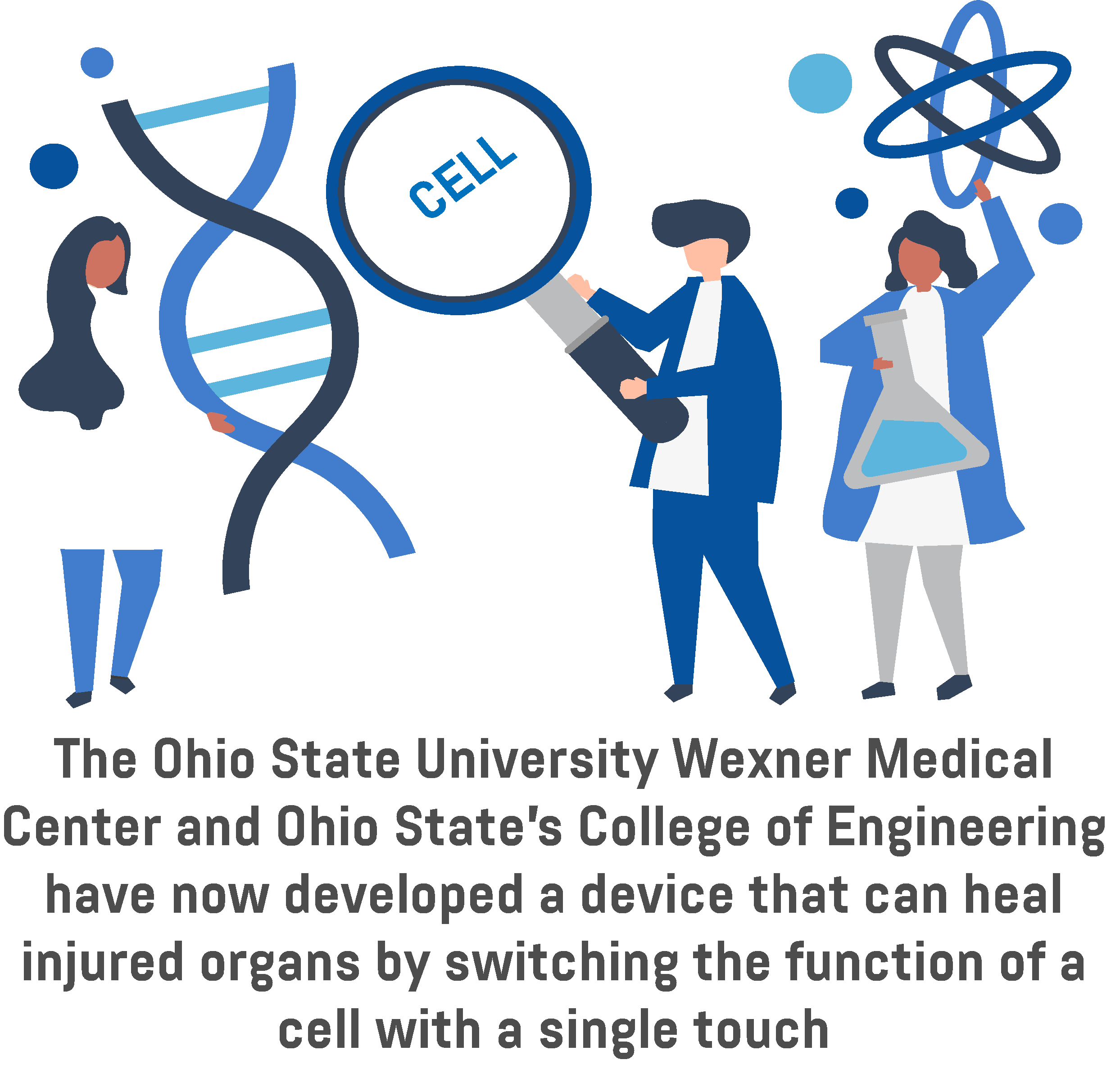- The healing potential of nanotechnology
- Penetrating the eye with thousands of nanobots
- Innovative ways to fight cancer
- Scientists promise to heal organs with a single touch
- Nanobots might be the key to a longer life
Modern medicine has made great advances in the past 100 years, significantly extending the human lifespan in the process. Some diseases that used to take millions of lives every year have been completely eradicated, while others have received new, more effective treatments. Unfortunately, the mortality rate remains high among people suffering from certain medical conditions, such as cancer.
The International Agency for Research on Cancer (IARC) estimates that there were 17 million new cancer cases and 9.5 million cancer deaths worldwide in 2018 alone. As the global population continues to grow and becomes older, these figures are expected to rise even further, reaching 27.5 million new cancer cases and 16.3 million cancer deaths by 2040.


Furthermore, even modern medicine is often completely helpless when it comes to healing badly damaged organs. One of the solutions to these challenges could be nanotechnology, which promises new ways of fighting diseases and repairing human cells. And it seems that the world is slowly starting to recognise the potential of this technology, with the global nanomedical market expected to reach a value of $293.1 billion by 2022.
The healing potential of nanotechnology
Nanotechnology can be defined as the science of manipulating individual atoms and molecules for the purpose of creating nano-scale machines (a nanometre is one-billionth of a metre). Nanotechnology has a wide variety of applications across many different fields, including chemistry, biology, physics, engineering, materials science, and many others. This article will focus exclusively on its medical applications, where nanotechnology is becoming an increasingly important tool in the continuing effort to prolong our lives.

There are two main applications of nanotechnology in medicine: eradicating life-threatening diseases like cancer or heart disease and repairing damage sustained by our bodies at the cellular level. That’s not all, though. Nanotechnology could also have many other medical applications, including disease diagnosis, targeted drug delivery, molecular imaging, and much more.
Penetrating the eye with thousands of nanobots
An international team of scientists, led by researchers from the Max Planck Institute for Intelligent Systems in Stuttgart, has developed propeller-shaped nanobots capable of drilling through dense tissue such as that found in the vitreous of the human eye. The nanobots are only 500 nanometres wide, which makes them 200 times smaller than the diameter of a human hair, and even smaller than the width of a bacterium. They’re also covered with a non-stick coating to enable them to move through the eye without causing damage to the sensitive biological tissue that surrounds them.
“For the coating we look to nature for inspiration,” explains Zhiguang Wu, the first author of the study. “In the second step, we applied a liquid layer found on the carnivorous pitcher plant, which has a slippery surface on the peristome to catch insects. It is like the Teflon coating of a frying pan. This slippery coating is crucial for the efficient propulsion of our robots inside the eye, as it minimizes the adhesion between the biological protein network in the vitreous and the surface of our nanorobots.” The scientists also added tiny particles of magnetic materials, such as iron, allowing them to use a magnetic field to propel the nanobots towards the desired destination.

The nanobots have already been successfully tested at the Eye Hospital of the University of Tübingen, one of the partners in the project. The scientists injected tens of thousands of nanobots into the vitreous of a dissected pig’s eye, and then used a magnetic field to guide them towards the retina while using optical coherence tomography to observe their movement. The hope is that this approach will one day enable us to develop nanobots that will be able to move not only through the eye, but other types of tissue in the human body as well. This discovery also marks an important step towards using nanobots to precisely deliver drugs to the parts of the body where they’re needed the most. “That is our vision,” says Tian Qiu, one of the corresponding authors of the paper. “We want to be able to use our nanopropellers as tools in the minimally-invasive treatment of all kinds of diseases, where the problematic area is hard to reach and surrounded by dense tissue. Not too far in the future, we will be able to load them with drugs.”
Innovative ways to fight cancer
Scientists at Arizona State University (ASU) recently joined forces with researchers from the National Center for Nanoscience and Technology (NCNST) of the Chinese Academy of Sciences to develop nanobots that can shrink tumors by cutting off their blood supply. “We have developed the first fully autonomous, DNA robotic system for a very precise drug design and targeted cancer therapy,” says Hao Yan, the director of the ASU Biodesign Institute’s Center for Molecular Design and Biomimetics. And since all blood vessels that feed tumor growth are basically the same, the scientists believe this technology could work on various types of cancers, including breast cancer, lung cancer, ovarian cancer, and melanoma.
The scientists ran successful tests on mouse cancer models, injecting human cancer cells into mice to induce aggressive tumor growth, and then deploying the nanobots to actively seek and destroy tumors. “These nanorobots can be programmed to transport molecular payloads and cause on-site tumor blood supply blockages, which can lead to tissue death and shrink the tumor,” explains Baoquan Ding, a professor at the NCNST. The nanobots consist of a flat, rectangular DNA origami sheet measuring 90 by 60 nanometres. They also have a blood-clotting enzyme called thrombin attached to their surface, which acts by blocking the blood flow and clotting the blood within the vessels that feed tumour growth, eventually leading to its death. The nanobots are programmed to travel through the bloodstream and only attack cancer cells, while leaving healthy cells unharmed. To achieve this, the scientists also attached a DNA aptamer to the robots’ surface, which can specifically target a protein called nucleolin, found only on the surface of tumour endothelial cells.
According to the scientists, the nanobots proved to be safe and immunologically inert in the tissues of mice and large animals, with no observed changes in normal blood coagulation or cell morphology. They also found no evidence of the nanobots spreading into the brain, where they could potentially cause stroke or other unintended side effects. Within 24 hours, the nanobots were able to block blood supply to the tumour and cause tissue damage, and were then cleared or degraded from the body. In the melanoma mouse model, the scientists observed complete regression of the tumors in 3 out of 8 mice, while the median survival time increased from 20.5 to 45 days. “The thrombin delivery DNA nanorobot constitutes a major advance in the application of DNA nanotechnology for cancer therapy,” says Yan. “Combinations of different rationally designed nanorobots carrying various agents may help to accomplish the ultimate goal of cancer research: the eradication of solid tumors and vascularized metastases.”
Using a slightly different approach, researchers at Durham University in the UK have developed nanobots capable of drilling into cancer cells and killing them within 60 seconds. The nanobots are equipped with light-activated motors and peptides that enable them to identify cancer cells. When exposed to ultraviolet light, the motors start spinning at two to three million rotations per second and break through the cancer cells’ membranes, destroying them in the process. The research is still in very early stages and the nanobots have only been tested on microorganisms and small fish so far. However, the researchers hope that human clinical trials are not that far away. “We are moving towards realising our ambition to be able to use light-activated nanomachines to target cancer cells such as those in breast tumours and skin melanomas, including those that are resistant to existing chemotherapy,” says Dr Robert Pal of Durham University. “Once developed, this approach could provide a potential step change in non-invasive cancer treatment and greatly improve survival rates and patient welfare globally.”
Scientists promise to heal organs with a single touch
As we get older, the DNA in our cells deteriorates and becomes damaged, leading to a variety of health issues. Until now, there was no way to reverse this process. But researchers at the The Ohio State University Wexner Medical Center and Ohio State’s College of Engineering have now developed a device that can heal injured organs by switching the function of a cell with a single touch.

Known as Tissue Nanotransfection (TNT), the technology works by injecting new genetic code into living skin cells and converting them into any other type of cell that may be required for treatment. It allows you to repair injured tissue or restore its function and can be applied to many different types of tissue, such as organs, blood vessels, and nerve cells. The researchers tested the process on mice with badly injured legs and were able to heal them in less than three weeks by turning skin cells into vascular cells. Similarly, they were able to help brain-injured mice recover from stroke by injecting them with skin cells that were reprogrammed into nerve cells.
According to the researchers, the procedure is 98 per cent effective, takes less than a second, and is completely non-invasive. All it takes to initiate the reprogramming of the cells is a small, almost imperceptible electrical charge. And since the technology keeps the cells in the body under immune surveillance, there is no need for immunosuppression. “By using our novel nanochip technology, injured or compromised organs can be replaced. We have shown that skin is a fertile land where we can grow the elements of any organ that is declining,” says Dr. Chandan Sen, the director of Ohio State’s Center for Regenerative Medicine and Cell Based Therapies.
Nanobots might be the key to a longer life
In recent years, nanotechnology has become an increasingly important tool in the ongoing struggle to extend the human lifespan. It can be used in medicine to fight some of the deadliest diseases, such as cancer, and even to repair or transform human cells. Even though much of the research in this field is still in very early stages and years away from any practical applications, scientists are confident that nanotechnology is the answer to many of the medical problems we face today. It may sound like science fiction at this point, but it probably won’t be that long before nanobots start roaming inside our bodies, fighting viruses and tumors and healing injuries. They’ll move freely through the bloodstream or various types of tissue, looking for signs of infection and then delivering their payload. In the future, they may even be able to repair not only individual cells, but tissues as well, and subsequently, entire organs.
Share via:


